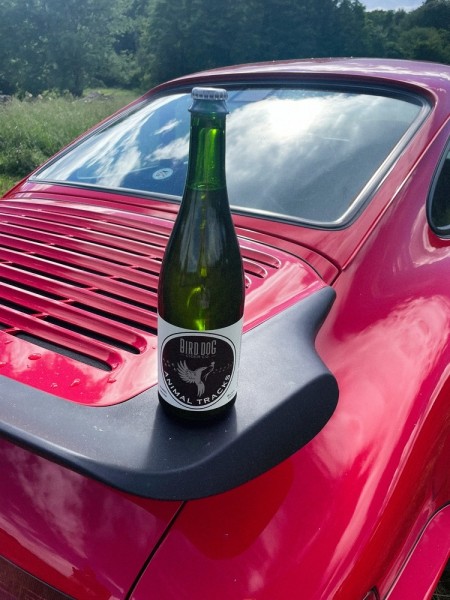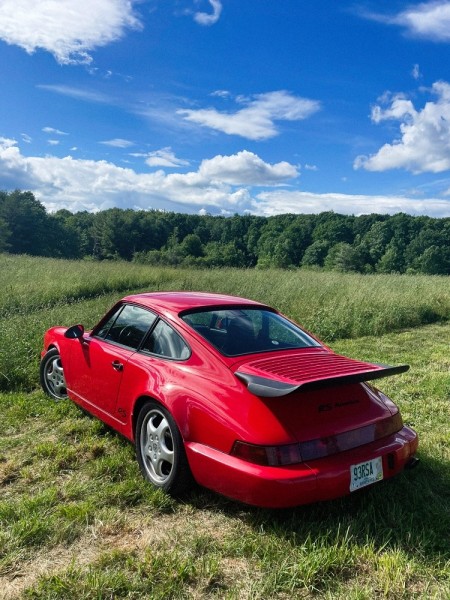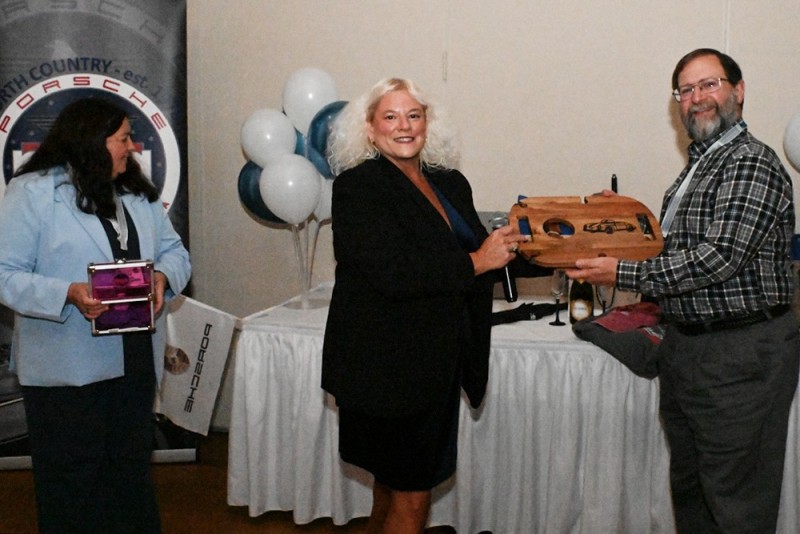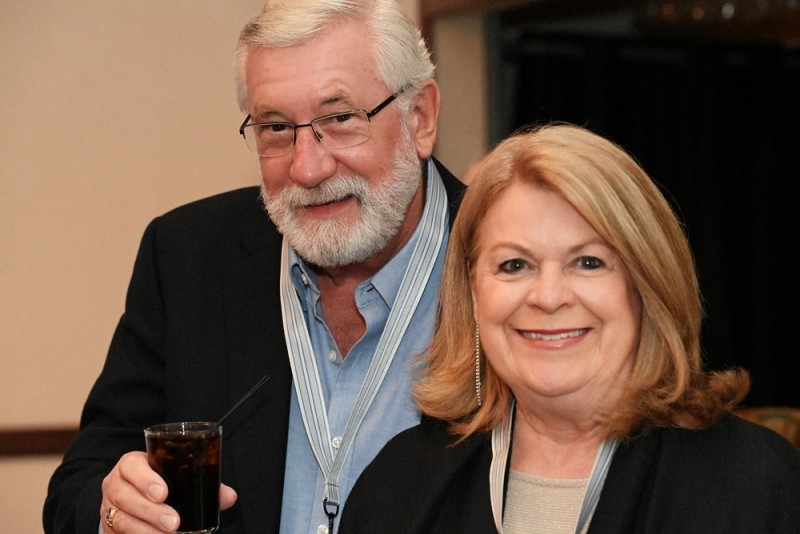- Details
ENTRANT CAR CLUB PLACE
Harry Robinson Award (Chosen by our Sponsor – Porsche of Stratham)
Jeff Sullivan 1986 911 Targa NCR
People’s Choice
Dan & Jean Witmer 1989 Autocraft Cobra
Mk IV, Blue NCR
CLASS: 1960’s Porsches
Jeff Clarke 1962 356 B Cabriolet CVR 1st
Peter Rice 1968 912 NCR
CLASS: 1970’s Porsches
David McLaughlin 1970 914-6, Yellow 1st
Bob Kivela 1978 930 NCR
CLASS: 1980’s Porsches
Tony Parente 1984 911 3.2 Turbo Look 1st
Doug Pomeroy 1986 930 Turbo NCR 2nd
Bill & Penny Meyer 1986 911 Targa,
Guards Red NCR 3rd
Kevin Simmons 1983 911 SC Cabriolet NCR
John Cavanagh 1986 911 Cabriolet NCR
Jeff Sullivan 1986 911 Targa NCR
CLASS: 1990’s Porsches
Hank & Ivy Cowles 1993 911 RS America,
Guards Red NCR 1st
Judy Hendrickson 1995 911 C2, Riviera Blue NCR
Dick Demaine 1990 944 S2 Cabriolet NCR
CLASS: 2000’s Porsches
Chuck Rudinsky 2005 911 Carrera S NCR 1st
George Burnet 2006 911 C2S NCR 2nd
Jeremy Keohane 2008 911 C2 NER 3rd
Bob Cairns 2007 911 Turbo NCR
Chris Ferreira 2008 911 C4S
Jeremy Keohane 2002 911 C2 NER
CLASS: 2010’s Porsches
Gary Smith 2018 GT3 NCR 1st
Joe Byrne 2011 Boxster Spyder NCR 2nd
Tom Greene 2016 Cayman GT 4 NER 3rd
Jeff Sullivan 2016 Cayman GT4 NCR
David Doran 2013 911 C4, Blue NCR
Gene Lyras 2013 911 CS NCR
CLASS: American
Stephen Allen 1963 Corvair, White NCR 1st
Dan & Jean Witmer 1989 Autocraft Cobra
Mk IV, Blue NCR 2nd
Dave Dion 2006 Ford GT, Red NCR 3rd
Chris 2016 Dodge Hellcat
Victoria Dewitt 2013 Jeep Wrangler
Ryan Paradis 1974 Corvette Stingray,
Black
Peter Hubbard 2018 Mustang GT
Tony Legault 1993 Honda Nighthawk
Rob Daigle 2013 Jeep Wrangler
Rene Van Oosten 2006 Pontiac Solstice
Chris Tucker 2015 Scion TC RS 9.0 Seacoast
Cars & Coffee
Robert Niven 2017 Acura NSX, Blue
Scott Mitchell 2014 Jeep Wrangler
Nick Smotle 1984 Cadillac Fleetwood
CLASS: Italian
Chris 2016 Lamborghini 1st
Aventador SV
CLASS: Other Than Porsche-German
Kristen Allen 1963 VW Beetle, Red NCR 1st
Zane Melillo 2009 Audi S5
Crispin Grant 2013 Audi RS5
- Details
North Country Region - Porsche Club of America
Porsche of Stratham
Annual Car Show to benefit the
Make-A-Wish Foundation of New Hampshire

August 6th, 2017 11:00 AM - 2:00 PM
Bring your family and invite your friends to cast their vote for some of the finest sports cars in the area.
Rain or shine (registration opens at 10:30)
Donation: $20 for each car displayed (Cash, VISA, or MasterCard). No charge for general admission
Trophies awarded for best Porsche by decade; and best British, Italian, Cobra, and non-Porsche German sports cars.
Special Sponsor’s Choice award honoring Harry Dean Robinson
Lunch served by Kathy’s Kitchen – $5 (proceeds to MAW), under 12 free
Music, 50-50 raffle plus an ice cream run to Lagos Rte 1 Rye, NH after the show
- Details
A Concours (full name Concours d'Elegance) is a car show. The principle object is to show the car in its most perfect condition (usually cleanliness and like new condition, but originality may play a role in some concours). The idea is that every car starts out perfect and as the judge finds something amiss he/she deducts points.
There are many levels or types of concours. Unfortunately there is not a standard meaning of all the terminology to describe the types. Top Only Concours for one group may mean something entirely different to another. We'll try to put some sense into all the terms. However, if the event you're entering hasn't been specific about what they mean by their terms, call the organizer and ask them. There's nothing worse than entering an event and finding out too late that they're going to look at some area of your car that you hadn't prepared.
{mospagebreak}
TYPES
Full
Full Concours usually means every aspect of your car will be examined, interior, exterior, trunk(s), engine and under chassis – front and rear. They'll look at your spare, tools and jack. Nothing will go untouched. Originality may count in Full Concours. Everything is proper as the factory could have delivered it, correct colors, engine materials, etc. This is not to say that the parts have to be the actual parts the car came with, but it does mean that restorations have to be done with parts (original equipment manufacturer or replcia parts) that meet original standards of fit, finish and material. At Parade, the Restoration and Preparation Groups have Full classes and originality counts in the Restoration Group.
Touring (Street)
Touring class is a term sometimes encountered. It is the term the Porsche Parade uses for the next step removed from Full Concours at its annual gatherings. The differences between Parade Touring and Full are that in Touring they don't look under the chassis – front or rear, except for the Preservation Group. Originality doesn't count in the Preparation Group, but does in the Restoration and Preservation Groups.
Top Only or Serious
"Top Only" is used a lot and can mean many things ranging from exterior only to the same thing as Touring, that is, everythiing except the under chassis. Sometimes the term "Serious" is used. If you encounter either term, be sure to ask the organizer exactly what it means in your region events.
Closed
Closed usually means they only look at the exterior of the car. Be sure, ask!
Display Only
This usually means ther's been a special area set aside at the Concours site for Porsches that have not entered the judging. They are there just to be displayed. They are usually not eligible for any trophies, not even People's Choice.
People's Choice
People's Choice is where the entrants or registrants themselves vote for the car they like best. There are no judging criteria.
Judges' Choice or Honorary Judges' Choice
A special group of judges, usually celebrities or otherwise honored guests or particularly knowledgeable people (not involved in the regular judging) pick the car they think best represents the marque. There may or may not be any particular criteria.
Preservation
This is a new category introduced at the 1996 Porsche Parade. Emphasis in this category is on preservation of the car as built by the factory with secondary emphasis on presentation. The car should have most, if not all, of its original parts and surfaces such as paint upholstery and carpet with most non-service items, such as rubber seals and trim original to the car. The factory Kardex (build data)/Porsche Cars North America Certificate of Authenticity for the car is required and will be examined by the judges. Judging is essentially a hands-off process; they look but don't touch. The owner decides which of the six areas will be inspected, but to be eligible for a trophy all six areas must be examined.
Score Sheets
Every region has their own score sheets for Concours. They are usually some variation of the Parade Score Sheets. Ask the organizer for a copy of the score sheets they will be using and use them to help direct you where to spend your time preparing. Get your score sheets back after an event. They will help you learn where you need to put extra effort and can help establish the value and condition of your car. The score sheets used for Parade can be found on the PCA web site (www.pca.org) in the library section under Parade Competition Rules.
Cleaning for Everyone
Concours may not be for everyone, but everyone can benefit from thorough cleaning of their car. If you want to get more involved in cleaning there is usually help within your region. Contact the Concours Chairs. National level judges come from the membership; North Country has several nationally qualified judges amongst it's ranks as well as members who have won class and division awards at Parade. They will be glad to answer your questions.
- Details
Another great day and fantastic social event at the Bird Dog Cider Farm. Click below to see the photos.
- Details
As the 2023 driving season comes to a close, we held our final event of the year - our Annual Banquet. Enjoy the wonderful pictures from David Churcher and we look forward to seeing you all next year! Click on a thumbnail to see all the photos!










- Details
by Bob Tucker
There is so much mystery surrounding the CIS (continuous injection system) fuel system Bosch has dubbed K Jetronic, I wanted to try and make some sense of it for all Porsche owners. The bits of the system include the fuel pump, pre-pump on some models, fuel filter, accumulator, fuel distributor, warm-up regulator, injectors, auxiliary air valve, air sensor plate, cold start valve, thermo-time sensor and on newer models an oxygen sensor, frequency valve and mixture control unit were added.
- Details
If you think you're fuel pump is not working, here's how to check it out:
More Articles …
Page 13 of 15




















